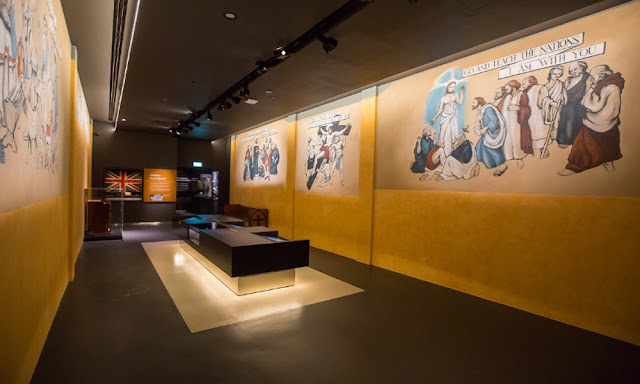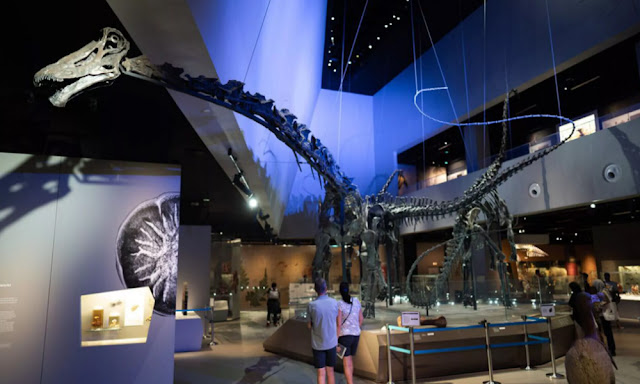
Best Museum in Singapore
Singapore is a vibrant and diverse city that offers a range of cultural experiences for tourists and locals alike.
One of the city’s highlights is its world-class museums, which showcase Singapore’s history, culture, and contemporary art scene. Singapore’s museums are not only educational but also entertaining, making them an ideal destination for visitors of all ages.
Among the best museums in Singapore, the National Museum of Singapore stands out as a must-visit destination. This museum is the oldest in Singapore and provides an excellent overview of the country’s history, from its early days to modern times.
The museum features various exhibitions and galleries that showcase Singapore’s culture, heritage, and development over time. Additionally, the museum’s modern and interactive exhibits make learning about Singapore’s past a fun and engaging experience. Overall, the National Museum of Singapore is an excellent destination for those who want to learn about Singapore’s rich and fascinating history.
Another noteworthy museum in Singapore is the ArtScience Museum. This museum is a unique fusion of art, science, and technology and showcases several interactive exhibitions that explore the intersection between these three fields.
The museum hosts many international exhibitions, making it an ideal destination for those interested in contemporary art and science. Visitors can explore the museum’s various galleries, which feature thought-provoking installations that engage the senses and challenge the mind. Overall, the ArtScience Museum is a one-of-a-kind museum that offers an unparalleled cultural experience in Singapore.
List of Best Museum in Singapore
There are several museums in Singapore, each with its unique focus and collections. However, some of the best museums in Singapore are:
National Museum of Singapore
This museum is the oldest in Singapore and focuses on the history of Singapore, from its early days to the modern era. The museum features various exhibitions and galleries that showcase Singapore’s culture, heritage, and development over time. It is a must-visit for anyone interested in learning about Singapore’s history and culture.

ArtScience Museum
This museum is a unique fusion of art, science, and technology, and it showcases several interactive exhibitions that explore the intersection between these three fields. The museum hosts many international exhibitions, making it an ideal destination for those interested in contemporary art and science.
Asian Civilisations Museum
This museum focuses on the diverse cultures and civilizations of Asia, with a particular emphasis on the Southeast Asian region. The museum features a wide range of exhibits that showcase the art, history, and culture of different Asian countries. Visitors can explore the various galleries and learn about the customs, traditions, and beliefs of the region’s people.

Singapore Art Museum
This museum features a diverse collection of contemporary art from Southeast Asia and beyond. The museum hosts many exhibitions throughout the year, and it is an excellent destination for art lovers who want to explore the vibrant contemporary art scene in Singapore.

Peranakan Museum
This museum is dedicated to the Peranakan culture, which is a unique blend of Chinese, Malay, and other indigenous cultures found in Singapore and Malaysia. The museum showcases various artifacts, costumes, and traditions of the Peranakan people, providing a glimpse into their fascinating culture and heritage.

Singapore Philatelic Museum
This museum is dedicated to stamps and postal history. Visitors can learn about the history of postage stamps and view a collection of rare stamps and philatelic artifacts.

Changi Chapel and Museum
This museum is located on the site of the former Changi Prison, which was used by the Japanese during World War II to house prisoners of war. Visitors can learn about the experiences of prisoners of war during the war and view artifacts from that period.

Lee Kong Chian Natural History Museum
This museum is home to over 2 million specimens, including fossils, plants, and animals. The museum features several galleries that showcase the diversity of life on Earth, making it an excellent destination for nature lovers.

Singapore Discovery Centre
This museum focuses on Singapore’s national identity, and its interactive exhibits provide visitors with a hands-on experience of Singapore’s history, culture, and values.

Red Dot Design Museum
This museum features award-winning designs from around the world, including industrial design, architecture, and fashion. The museum offers a glimpse into the creative process and the impact of design on everyday life.
Singapore has many museums to choose from, each with its unique focus and collections. Visitors can explore these museums and learn about Singapore’s rich history, culture, and art scene.
Conclusion for Best Museum in Singapore
Singapore’s museums offer an enriching cultural experience that is not to be missed. Whether visitors are interested in history, contemporary art, or science, Singapore has a museum to suit their interests.
The National Museum of Singapore and ArtScience Museum are two of the best museums in Singapore that offer unique and engaging experiences for visitors. The former provides a comprehensive overview of Singapore’s history, while the latter explores the intersection of art, science, and technology.
Singapore’s museums are a testament to the city’s vibrant cultural scene and its commitment to preserving and promoting its rich heritage. Whether visiting for a day or a week, visitors should take the time to explore Singapore’s museums and learn more about the city’s fascinating history, culture, and contemporary art scene. With its diverse range of museums and exhibitions, Singapore offers something for everyone and promises an unforgettable cultural experience.
https://www.exaputra.com/2023/04/the-best-museum-to-visit-in-singapore.html
Renewable Energy
Before Trump, “Contempt of Court” Used to Be a Big Deal
 Most Americans, me included, are puzzled as to how the Trump administration can openly thumb its nose to the findings of our courts. Until recently, behavior like this would have wound you up in jail.
Most Americans, me included, are puzzled as to how the Trump administration can openly thumb its nose to the findings of our courts. Until recently, behavior like this would have wound you up in jail.
Renewable Energy
How Households Saved $1,200 with VEU & Air-Con Upgrade?
Renewable Energy
Air Power
 About 20 years ago, a friend asked me if I was aware that cars could run on air. I asked, delicately, what she meant, and she explained that cars can run on compressed air.
About 20 years ago, a friend asked me if I was aware that cars could run on air. I asked, delicately, what she meant, and she explained that cars can run on compressed air.
“Ah,” I replied. “Of course they can. But where does the energy come from that compresses the air?” End of conversation.
Now, it’s back. Now there are enormous swaths of the population who know so little about middle school science that they believe we can put cars on the road, in an ocean of air, and extract energy out of that air to power our automobiles.
If you’re among these morons and want to invest with some heavy-duty fraud/charlatans, here’s your opportunity. They say that it’s “self-sustaining and needs no fuel.” If that makes sense to you, be my guest.
-
Climate Change4 months ago
Guest post: Why China is still building new coal – and when it might stop
-
Greenhouse Gases4 months ago
Guest post: Why China is still building new coal – and when it might stop
-
Climate Change2 years ago
Spanish-language misinformation on renewable energy spreads online, report shows
-

 Greenhouse Gases2 years ago
Greenhouse Gases2 years ago嘉宾来稿:满足中国增长的用电需求 光伏加储能“比新建煤电更实惠”
-
Climate Change Videos2 years ago
The toxic gas flares fuelling Nigeria’s climate change – BBC News
-

 Climate Change2 years ago
Climate Change2 years ago嘉宾来稿:满足中国增长的用电需求 光伏加储能“比新建煤电更实惠”
-

 Carbon Footprint2 years ago
Carbon Footprint2 years agoUS SEC’s Climate Disclosure Rules Spur Renewed Interest in Carbon Credits
-
Renewable Energy5 months ago
US Grid Strain, Possible Allete Sale












